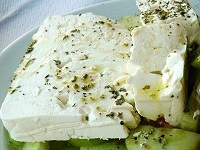Pignoletto (Italy)
Pignoletto is a white wine from Emilia Romagna.
The main grape is Grechetto Gentile.
Pignoletto Flavors
Typical Pignoletto flavors are Citrus, Apple, Pear, and Peach.
Hints of White Flowers, Herbs, Almonds, and Salty Minerals.
Lemon |
Apple |
Pear |
White Peach |
White Flowers |
Bitter Almond |
Nuts |
Seashell |
Pignoletto Profile
Pignoletto is fruity, floral and acidic:
| SUGAR: | Dry (3 g/l) |
| BODY: | Medium |
| FRUIT: | High |
| ACIDITY: | Medium Plus |
| ALCOHOL: | 12-13% ABV |
| Serving temperature: 10-12°C (50-54°F) | |
Pignoletto Food Pairing
Pignoletto is great as Aperitif, with Starters, Vegetables and Seafood.
Aperitif |
Salads |
Antipasti |
Pasta |
Fish |
Seafood |
White Meat |
Soft Cheese |
Excellent Pairings
Antipasti. Sandwiches. Focaccia.
Green Salads. Asparagus. Avocado. Artichokes.
Onion Soup. Gazpacho. Ribollita Toscana (Beans Soup).
Ham and Melon. Egg Dishes. Omelette.
Grilled and Fried Fish. Seafood.
Smoked Salmon. Baccalà. Bacalao.
White Meats. Fowl. Oca Arrosto (Roasted Goose). Rabbit.
Cheeses
Soft and Fresh Cheeses.
Brie. Camembert. Washed-Rind. Robiola.
The Ideal Glass for Pignoletto
A Tulip Shaped Glass with a slightly smaller bowl can be suitable for various dry white wines.

|
The glass guides the wine to the center of your mouth, avoiding the sides where acidity is less pleasant.
A smaller bowl also helps to serve smaller quantities, and keep the wine cold. It also helps if you hold the glass by the stem! |
Pignoletto Cheese Pairing
Opt for cheeses with moderate saltiness and creaminess to balance the wine's acidity. You can also add accompaniments like fresh fruits (grapes, apples, pears), nuts (almonds, walnuts), or a light drizzle of honey to enhance the pairing.
Fresh and Mild Cheeses
Mozzarella: Its delicate flavor pairs well with the wine's lightness.
Ricotta: Especially good if served with a drizzle of honey or fresh fruits.
Goat Cheese (Feta): The tanginess complements the subtle fruit notes in Pignoletto.
Soft Cheeses
Fontina: Its nutty, buttery qualities make a good match.
Brie: The creamy texture and mild flavor work beautifully with Pignoletto.
Primo Sale: Similar to Brie but more flowerly, herby, and salty.
Semi-Soft Cheeses
Asiago: Lightly aged Asiago adds a complementary tang to the wine.
Gruyère: Mildly nutty and sweet, enhancing the wine's subtlety.
Blue Cheeses (for contrast)
Robiola: Its mild creaminess contrasts nicely without overpowering the wine.
If You Like Pignoletto
You May Also Like:
Region Emilia Romagna

Climate
Emilia Romagna enjoys has a mild continental climate: Wet winters and dry summers.
The most important landmark is the River Po. It is responsible for cooling breezes that are vital in the flat terrain.
Unlike Toscana and Piemonte, the wine growers cannot rely on elevation and the moderating effects of diurnal temperatures.
One exception is the hills around Bologna with the sandstone and limestone terroirs of the Colli Bolognesi, with some very high-quality wine production.
Soil
The plains around the Po Valley are known for their fertile alluvial soils, ideal for growing grapes. The area is particularly well-suited for producing sparkling wines like Lambrusco.
The hills of the Apennines has a mix of clay, sand, and limestone soils, providing excellent drainage and mineral content, ideal for producing high-quality wines.
Black Grapes |
White Grapes |

20% Lambrusco |

|
Red Wines |
White Wines |

|

|
Denominations
Colli Bolognesi Pignoletto DOCG
Romagna Albana DOCG
Bosco Eliceo DOC
Colli Bolognesi DOC
Colli d’Imola DOC
Colli di Faenza DOC
Colli di Parma DOC
Colli di Rimini DOC
Colli di Scandiano e di Canossa DOC
Colli Piacentini DOC
Colli Romagna Centrale DOC
Emilia-Romagna DOC
Gutturnio DOC
Lambrusco di Sorbara DOC
Lambrusco Grasparossa di Castelvetro DOC
Lambrusco Salamino di Santa Croce DOC
Modena DOC
Ortrugo dei Colli Piacentini DOC
Reggiano DOC
Reno DOC
Romagna DOC








